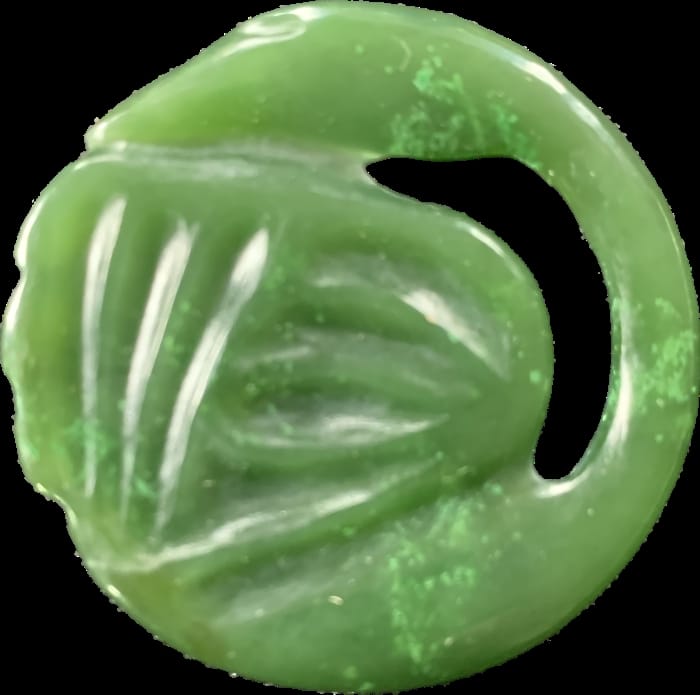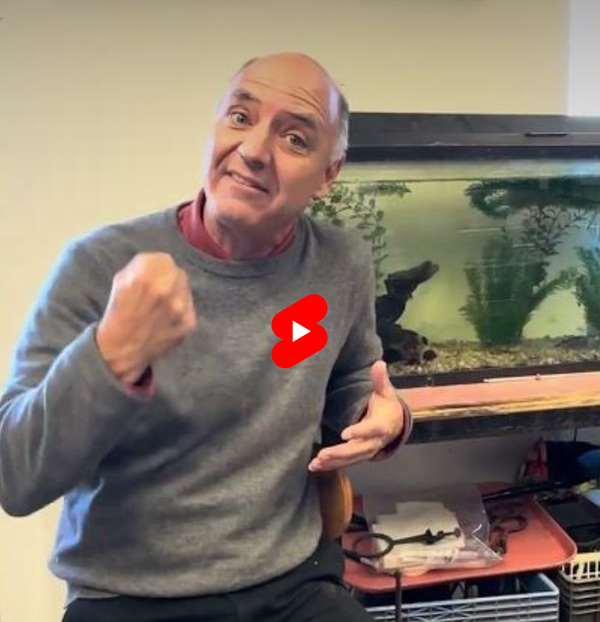What is the Fishy Context of Anzu the Lion-Headed Eagle?
Through the story of the nature, the magic and the protective power of these 4000 year old Anzu amulets, Dr. Josh Stout argues that this type of 'desk archaeology' can uncover real and important context, generate new discoveries, and can challenge and inform previously held assumptions.
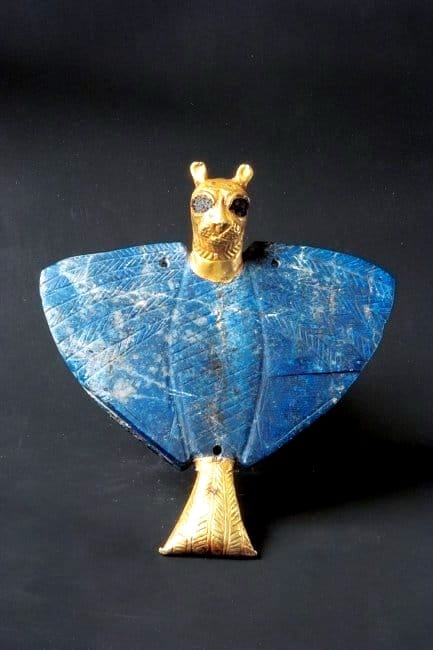
Below is lightly a edited AI generated transcript and there may be errors. Please scroll down for links below the transcript.
Eric:
Mind-Body Evolution on video yet again, folks. This is Dr. Josh Stout and I have to say I am excited about bringing it all together. These artifacts, Josh is gonna bring it together for us. Josh, what have you got?
Dr. Josh Stout:So I've been showing a series of artifacts. First I showed the ones that I'd found and then I've been showing the artifacts that were actually on,
they were on the on the website and that I didn't buy and were I all of the like larger group of
artifacts that help identify it as a single cohesive civilization. And so I'd been showing some examples of that and today I wanted to show, I wanted to show more of these these Anzu figures. So I'd shown my lion head that I thought was part of a larger lion-headed eagle, and I wanted to show this one right here, sort of at the beginning.
Dr. Josh Stout:This is a really iconic figure. This is, and I'm using that term correctly. Uh, this is, this is, this is a figure that, uh, is seen through thousands of years of history, is in current, uh, you know, flags of, of different groups, I, I, uh, representing, uh, Zoroastrian religion, representing, uh, Kurds. You can see this same eagle. And this is, this is the classic, uh, Anzu eagle, where we, where you have the, um, the lion head, you have the, uh, the, uh, the wings coming out and the claws below it, and it all looks, you know, nicely, nicely well defined. You have, you have the, um, the eagle with the wings, with the claws down below and a lion's head on top. And that's how we understand the Anzu. But the really interesting thing about, um, this set of artifacts is the way they fit into the larger Sumerian culture. You can start seeing commonality with, uh, known pieces. So
Dr. Josh Stout:this is a, this is a, um, an Anzu figure that was given to the, the king of Mari, a, a city in Syria that is one of the well-documented cities in Syria. Uh, it was actually explored by Lawrence of Arabia. It was explored, you know, it was sort of part of the, the great, um, um, uh, Orientalism movement was, was discovering these things and, and understanding that these cities were, uh, part of this, this ancient group of civilizations. Uh, and that was sort of the romance of that, uh, earlier period. I definitely feel it now, and I'm trying to avoid being that kind of Orientalists. I, I really don't want to be Lawrence of Arabia.
Eric:Is that, is that word even still usable?
Dr. Josh Stout:No, not really.
Eric:Yeah. Let's move on from that.
Dr. Josh Stout:Exactly. So, uh, these, these, this, you know, the city of Mari was, was dug up during that period. Uh, and it's a very important, uh, city in, in Northern Syria. Uh, and this, um, this Anzu figure was, we actually have the writing about it. So we, we, we know a little bit about it. So it was actually given by, uh, the, the king of Ur. So one of the very earliest Sumerian cities, uh, gave, gave this piece, uh, to the king of Mari. And so we know their names, we know what happened. And so we, this is a very well-documented piece. And this is the classic example.
Eric:How long has this piece been known? You say this is a well-documented piece. Was this sold at auction?
Dr. Josh Stout:Uh, it was, it was found in, in, in, I think in the thirties when they were digging up Mari. Um, maybe, maybe a little bit later, I've, I'm not positive about all these dates, but this is relatively recently, uh, recently known. Uh, and it was from, I don't know, 5,000 years ago. Uh, so, uh, you know, it's a truly ancient piece with a very decent provenance. It's, it's one of the most famous out there. Um, and, uh, it's lapis lazuli. The lapis lazuli would have come from, uh, Afghanistan. So it was transported a long way along the Silk Road. Uh, in many ways, I think the Silk Road was actually the Bronze Road, right? Cause you had to get tin from Afghanistan to make your bronze for the Bronze Age. So, uh, you
Dr. Josh Stout:know, this figure would be sort of exemplary of, of the kinds of things that could be produced at the height of the Bronze Age in, in, you know, the, the top palace cultures. So it's gold and lapis lazuli from, you know, distant lands. Uh, and then representing this, um, uh, just like the first one, which was a simpler, uh, one. It was just made of marble with a black bitumen in the wings to highlight the feathers. Um, this one is, is, is, is, you know, just a whole nother level. This is, these are the palace cultures.
Eric:This is, this is, this is the sign of an advanced civilization.
Dr. Josh Stout:Well, it's the, it's the sign of you've, you've dug up the palace. You've gotten to the king. You're actually looking at the gold and the silver and the, the, the, the, the fine gems. The ones I'm showing are again, sort of lesser levels that got their way, uh, to the, to these auctions. Um, and, uh, again, I, I suspect that these were sort of the ones that they couldn't make any money from in the, in the private, uh, uh, realm of these things.
Eric:So then they just, so then they just listed them as being from other exotic places.
Dr. Josh Stout:Yeah. They just start dumping them so that they can sell them without getting caught.
Eric:And they do get bought. I mean, they're right about that.
Dr. Josh Stout:and people do buy right about, they're some money. They're not making a lot of money, but they're making some money.
Eric:I mean, even you, you get something from a faraway land and you can make a,
Dr. Josh Stout:right.
Eric:Even a few bucks.
Dr. Josh Stout:Anyway, I wanted to show this piece, the, the, the lapis lazuli one, uh, because if you look at it,
Dr. Josh Stout:it has a hint of something else that's going on. If you look at the central body, you can see that there is a tail and a sort of streamlined center, and you could kind of imagine that as a fish and you do not get that as far as I could find in any of the discussions of Sumerian civilization.
Eric:It does look like the tail of a fish.
Dr. Josh Stout:It kind of does. And you can almost see there's kind of scales. You see that sort of diamond pattern in the, in the stone itself, uh, wasn't carved there, but it starts to look a bit like scales and wings coming out from it.
Eric:So where, where are you going with this fishy thing?
Dr. Josh Stout:Well, one of the pieces that got sold online that I got outbid on, uh,
Dr. Josh Stout:is this fantastic Anzu figure here. Uh, this is, again, you can see the tail, the two wings coming up. It's a little bit different, but it has that same general look. Uh, interestingly, it, uh, it's, it's made of steatite, which is a, um, a very soft stone, and someone scratched these letters in, uh, that, uh, are, you know, they look like somewhat like Roman letters or perhaps Greek letters. Uh,
Eric:looks like Greek,
Dr. Josh Stout:but it would have been much, much later than the artifact. So, uh, it's, it's interesting. This might've been a city that, that stuck around for several thousand years and someone found this put their own magic spells on it. They don't actually spell out words. They don't, they don't have any intrinsic meaning that I could see. And I, I know at least some Greek. Uh, so these were, again, a little bit like letters by someone who didn't know Greek, uh, writing Greek letters to make a magical item.
Eric:Like the, the object you showed before that had cuneiform.
Dr. Josh Stout:cuneiform.
Eric:Was
Eric:not cuneiform.
Dr. Josh Stout:Yeah, exactly. Exactly. So anyway, this piece, uh, you can see is, is a pendant, uh, that the eyes of, of the, um, uh, of, of that, uh, lion form there are actually the drilled holes. Uh, but the really interesting thing is the backside. And again, you can see these, these, these, these fake, uh, Greek letters. You have, um, something that looks like an R the Greeks would, the Greek R is more like a P, but then they gave it a little tail. So it looks a bit more like RR, but then, uh, right on the lower, lower word, it's not really a word, but if you look at it, you have something, uh, the second letter, uh, it looks a bit like a, like a Psi, the, um, the, the, the trident. And so after the thing that looks like a T and you know, that that's only Greek or Cyrillic or one of those, those Greek influenced, uh, letters. And then the last letter looks like an upside down V that would be an N. So, and that, and that doesn't spell out anything meaningful. As far as I could tell, that would be
son. You can't even say it, a T, the Psi, an Omicron, and then a, an N. Uh, so yeah, anyway. Um, but then looking at the, at the wings, this is the part that's really important. Um, the wings of the fish, uh,
Dr. Josh Stout:the wings of the eagle are made of fish. You can see the gills, you can see the eyes, and you can see the little mouths of the fish.
Eric:Oh, I had not seen that until you just said it.
Dr. Josh Stout:And the fifth fish bodies join in the tail of the fish, which is also the tail of the eagle.
Eric:Because to me, I, it was looking like a stingray, but now I absolutely see two fish.
Dr. Josh Stout:And those are the wings of the eagle. And so, um, in this,
Dr. Josh Stout:in this previous, uh, example where I think it's a fish, eagle, lion, uh, it's just sort of the body. And so no one had paid attention to that, but now you can see it's really obviously fish associated there. There's no question about that. And this is what I wanted to point out is that it's not just that we are, um, looking at, you know, a previously undescribed city, state civilization that had its own independent culture. But
Dr. Josh Stout:we're looking at something that can actually inform us of the neighboring cultures. So the larger sort of Mesopotamian world included these Anzu figures that we understand as lions with eagles. And I would like to put out the hypothesis and fish. And it's, you know, it's not something that you would expect, but it's really hard to deny that those are fish when you see them as the wings of that eagle in an Anzu figure.
Eric:I mean, yeah, you,
Dr. Josh Stout:let's go back to it.
Eric:It transformed the way my mind resolved it. Yes.
Dr. Josh Stout:Yeah. Let's go, let's go back to it. So you really can see the bodies of the two fish united there. And so this, this brings a whole nother context to, you know, what an Anzu figure can be. Um, and sort of, you know, moving on, you can see here's the whole sort. So again, this is an apatropaic figure, very finely carved though. The, the, the curve of those wings is magnificent. Um, and you can see that the, that the sides were drilled from two different sides. So this was hand drilled and it would have been, uh, possibly worn around the neck. Uh, and then it was re-dug up perhaps thousands of years later and carved with whatever those letters are supposed to represent.
Eric:So you're, so you're saying this was lost and then found and then graffitied and then lost again.
Dr. Josh Stout:All
Dr. Josh Stout:at the same site, because I think these are, again, all connected from the same site. Uh, and I, you know, they're connected by the way they look, they're connected by the, the, the, some of the materials. Um, but sort of a general, uh, sort of, you know, the, the way they're connected to the larger Sumerian civilization with a bit of a twist also, I, I, I see as, as indicative of this group. Um, and there was more than one of these, uh, sets of pendants. So, uh, moving on,
Dr. Josh Stout:here's a, a, a really lovely, uh, carnelian or agate, um, uh, uh, uh, uh, pendant with, um, uh, you know, beautiful striations there. It's been drilled. Uh, you can see, um, it's got, it's got a little bit of age in it. Uh, it's hard to, it's hard to see, but they can see the, um, the actual patterns in the stone, uh, form the, uh, the wings of, of, of, of this, of this, um, uh, Anzu figure. Again, it looks a bit like a, like a stingray, uh, but it, this is a very just stylized version. It's those two upturned arms. And unless you'd seen that other one, you wouldn't know what the heck this is, right?
Eric:And
Eric:you're saying this is four, four to 6,000 year old jewelry.
Dr. Josh Stout:This is jewelry, but again, this is, these are magical amulets.
Eric:They are, they have magical properties.
Dr. Josh Stout:And, and they're associated with, as we were talking about before, as, as the essence of nature. This is the storm God the mountains roar is his thunder. You know, the, the, the black cloud is the Eagle coming in. So that black stay a tight would have definitely represented that, that, that, um, you know, Eagle coming in, uh, uh, the, the, the, the oncoming cloud here, let's keep moving forward.
Dr. Josh Stout:Um, and these were, uh, you know, precious stones, uh, with, um, uh, you know, that would have been made in the necklaces, the head of the Anzu in the, in the top one there, the red one has, uh, has been broken off. The, the lower one, you can see, uh, possibly, uh, some signs of Bitumen there. Um, but these, these, these were, you know, well-carved, you know, beautiful, beautiful, uh, magical amulets. Uh, you can see there, they, uh, if you look at the, the smaller one on the left there, the, um, the two, uh, wings are actually, uh, outlined by the, uh, pattern of, of the stone itself, that, the, the, the striations in the stone are going out into the wings.
Dr. Josh Stout:And so these, these, these, these, while they are, um, you know, these are the amulets of the common people, some care went into them. They, they're, they're, they're beautiful objects, uh, and they, they represent, um, this, this, this, uh, form of nature, the, the, the, the, the essence of nature, the, the, the Anzu. So Anzu in many ways is a, um, it's like you have the civilization god of, of, of, of whoever the, the, the head of, uh, of the pantheon is, uh, on or, or, or, um, uh, uh,
Enki, uh, or Shamash. And then you have the, the sort of almost de, uh, personified, deified, I don't know what the right, right word is, uh, form turned into this, this eagle lion representing the mountains and, and, and the wild and, and storms. And so this is, is, is very much taking that same idea of, of the, the, the, the head deity, but then turning it into, into the wild form. And then people would wear this to protect themselves.
Eric:So you're, you're essentially, it's like, it's like essences and manifestations is.
Dr. Josh Stout:Absolutely. And, and, and that you can then, um, you can have it on you and it will serve an actual, an actual purpose. All right, let's keep going forward. Uh, and, and, and
Dr. Josh Stout:you would carve it out of beautiful things, uh, so that you can, you, you, you're, you're increasing its value as an amulet by increasing its, its beauty as an object. The, the, the, the, the nicer stones are more powerful. Um, this is the last one.
Dr. Josh Stout:This one was interesting. Uh, it's, it's, it's, you know, a clearly gorgeous, uh, slice of an agate here, but if you look carefully, you can see that the, the slice was not all even. This was done with hand tools, probably like something like a string with, with, with a very hard stone, like a garnet powder, uh, pulled back and forth.
Eric:A-mazing.
Dr. Josh Stout:Amazing. So just, just cutting the slab might've taken six months to a year just to cut the slab for this thing. And then it was hand carved into this shape.
Eric:Talk about an object of devotion.
Dr. Josh Stout:Absolutely.
Eric:Goodness. And all that is, is a slice that
Dr. Josh Stout:all that is, is a slice. But if you, again, look back at the slice, you can see it's, it's not even, this wasn't done with a saw. This wasn't done as a modern saw. And they, and they made the whole amulet around the central circle of, of, of the piece. And so you can see how they, they, they centered it. Uh, they, they, they balanced it. Um, you know, I, I just don't see modern people putting this much care in something and you, so you really can see the devotion.
Eric:I'm just curious, is that something, is that thing that we just looked at? Is that something that, uh, you bid on or just something you saw?
Dr. Josh Stout:I did, I did bid on it and I, I didn't win. Uh, and it was being sold as from China. So, uh, you know, it's, again, these, these things would have been lost except for the pictures I have.
Eric:And what, and what made you think this thing was not from China? It was, it's.
Dr. Josh Stout:Well, because it looked just like these guys, right? It's exactly the same pattern. It's, it's the same look. And I'd actually seen it sold before with a different label
Eric:on the same site, on the same site. You saw the same object listed
Dr. Josh Stout:differently.
Eric:And so it was sold and then returned to them and resold
Dr. Josh Stout:perhaps. Yes. That seems like that. Or maybe someone maybe didn't, maybe never, no one ever paid. And so then it was listed as something else because maybe they'll pay this time.
Eric:Oh, okay.
Dr. Josh Stout:You know, because if you are buying something, you have a, you have an obligation to pay, but if you just walk away, there's nothing anyone can do. So I think a lot of objects just don't get bought and then get resold. Um,
Eric:or maybe there's something else going.
Dr. Josh Stout:Lots of things could happen. People could be bidding, you know, the site could be bidding against itself. Hard, hard to say, trying to bid up the numbers, all sorts of things could be happening. Um, but I, I, I just, I just loved this one because it was, it was, it was such a classic piece and so beautiful. Uh, and yeah, I mean, I, I, I wish I could just bid keep going up. Um, I think it went for something like $70. I mean, it's like almost a shame that I, that I didn't buy it, but
Eric:I mean, you have to have a limit. I mean,
Dr. Josh Stout:and I would have had to buy higher, bid higher. And I had the feeling it was just going to keep going up. I wasn't going get it for 80.
Eric:Right.
Dr. Josh Stout:Yeah. Anyway, I, I, I, I, I, I'm, I'm just in awe of, of, of, of, of the beauty of how this was put together. Again, you can see that same dark staining. It looks, it looks like it was, um, you know, in contact with, with, uh, bid a mists, uh, or maybe, uh, some sort of oily residue like many of the offering bowls. So these might've been worn around people's necks, uh, but then given to the temple as part of the offering and, uh, then possibly, you know, covered in a perfume or something like that. Uh, and, uh, I, I just have, you know, several of these pictures, um, because they were on the site and, uh, looking at the, at the details of it. Um, here, here you can see that from the side, uh, it's, it's, it's, it's, it's a slab. It's not a perfectly even slab. Um, and that's it. That's the, that's, that's, that's the last of the, uh, the Anzu figures that I have, but, uh, they're,
Dr. Josh Stout:they're just a fantastic collection. And I think together with this larger collection, you can start to see, uh, a cohesive civilization that lends information to the larger Mesopotamian world it was in, that there are these, these, these things trading all the way from Afghanistan, all the way to Egypt, uh, and they're including these cities along the Silk Road, uh, along, uh, all the way from, you know, Persia through, through, through Northern, uh, Syria and, in Turkey, uh, that whole region was interconnected. And so not only are we able to see this group in, in, in, in the context of, oh, I see some influence from Egypt. I see a larger influence from, from, uh, the Sumerian, uh, groups, uh, or Akkadian, but I see, uh, things in artifacts that tells me something about what was happening when they made that Anzu in Er. So I see this Anzu in Er, and now that I know that the Anzu's, the Anzu figures, um, in, at this site had fish for wings, I suddenly see a fish when I look at an Anzu. And I never saw that before. And I don't think anyone else does because they hadn't seen this fish Anzu. And it was staring you right in the face, but until you look closely, it's, you, you, that could be just a bird. But when you look at it and you start realizing, oh, the, the diamond pattern of the central chest, those were actually scales and that bird tail is actually a fish tail. Now there's no way to prove that I know that's true, but then I show you an Anzu from this site that has actual fish that you can't argue with for wings. And you start to draw the conclusion that maybe this nature spirit is including fish as part of its sort of overall larger context.
Eric:I love this. I love this because you have the creatures of, of the land and you have the creatures of the air.
Dr. Josh Stout:And now there's the ocean.
Eric:You
Eric:have to,
Dr. Josh Stout:yeah, exactly. You have a good point. Yeah. It's bringing all three things together.
Eric:Yeah. Prior to this, prior to you even mentioning this, it was, it was an omission.
Dr. Josh Stout:Absolutely. And it was mostly thought of as an air thing, except occasionally they'd have this goat aspect to it. And so it was sort of goat
Eric:mountain, Right. Well, you could get up there that way, but you also, you also had wings. So
Dr. Josh Stout:yeah. Yeah. Yeah.
Eric:But when the wings are fish.
Dr. Josh Stout:Yeah. So now you have mountains with streams and clean water coming out of the. Yeah.
Eric:Wonderful.
Dr. Josh Stout:Yeah. Yeah.
Eric:That's wonderful. All right. Well, Josh, that was a fascinating journey. Thank you so much.
Dr. Josh Stout:Thank you so much.
Eric:I hope that, I hope that everyone has the time to actually work through from the beginning to the end of this cycle.
Dr. Josh Stout:This is a lot.
Eric:It's a lot of information, but I think that you've found something and it's fascinating and it speaks to many things, both in the past and, and in the present. It's really wonderful. All right, folks. Uh, let's say goodbye. Thanks for watching my body evolution on video mindbodyevolution. info. Thanks folks.
Dr. Josh Stout:Thanks so much.
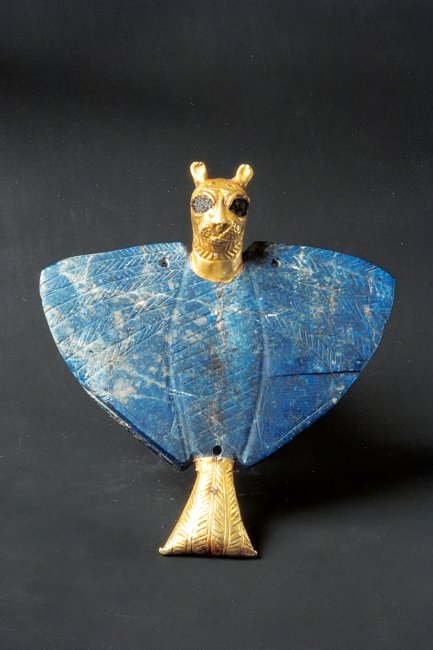
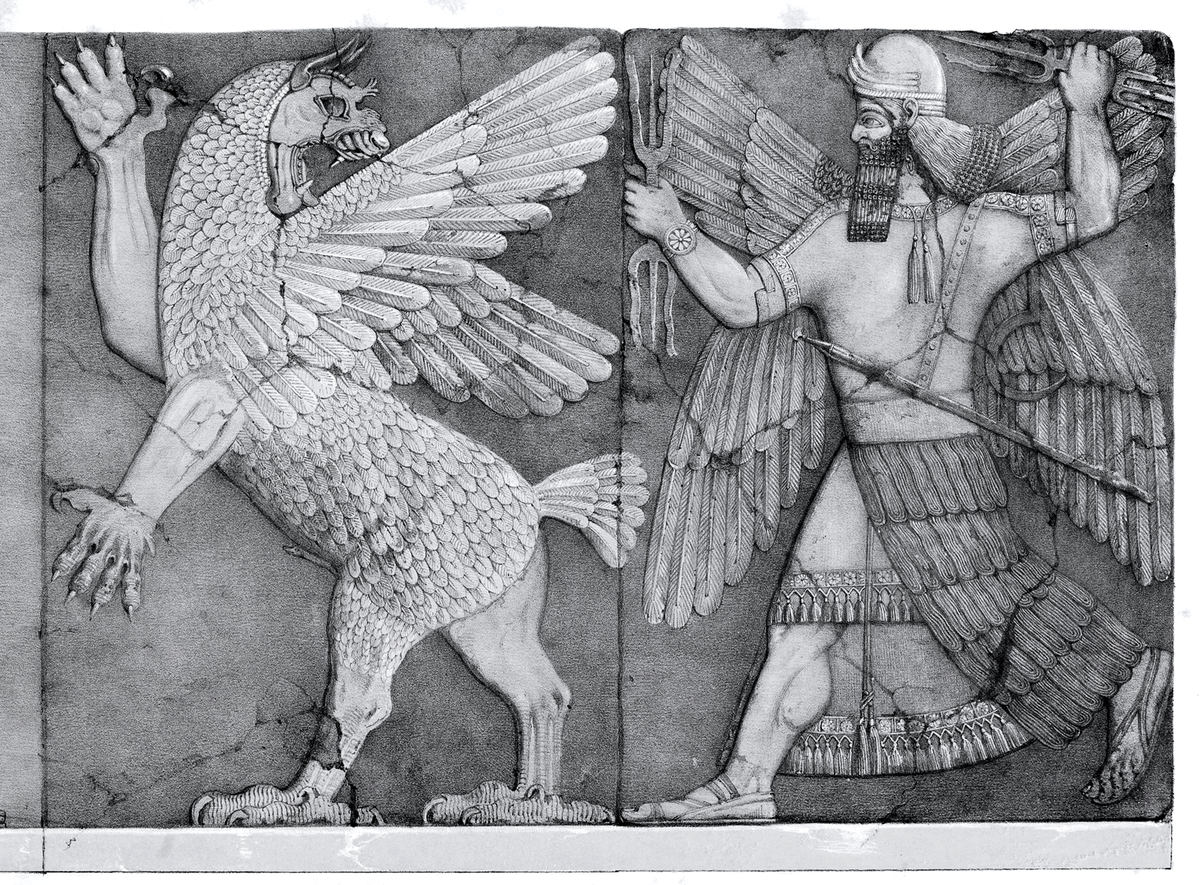
Theme Music
Theme music by
sirobosi frawstakwa

